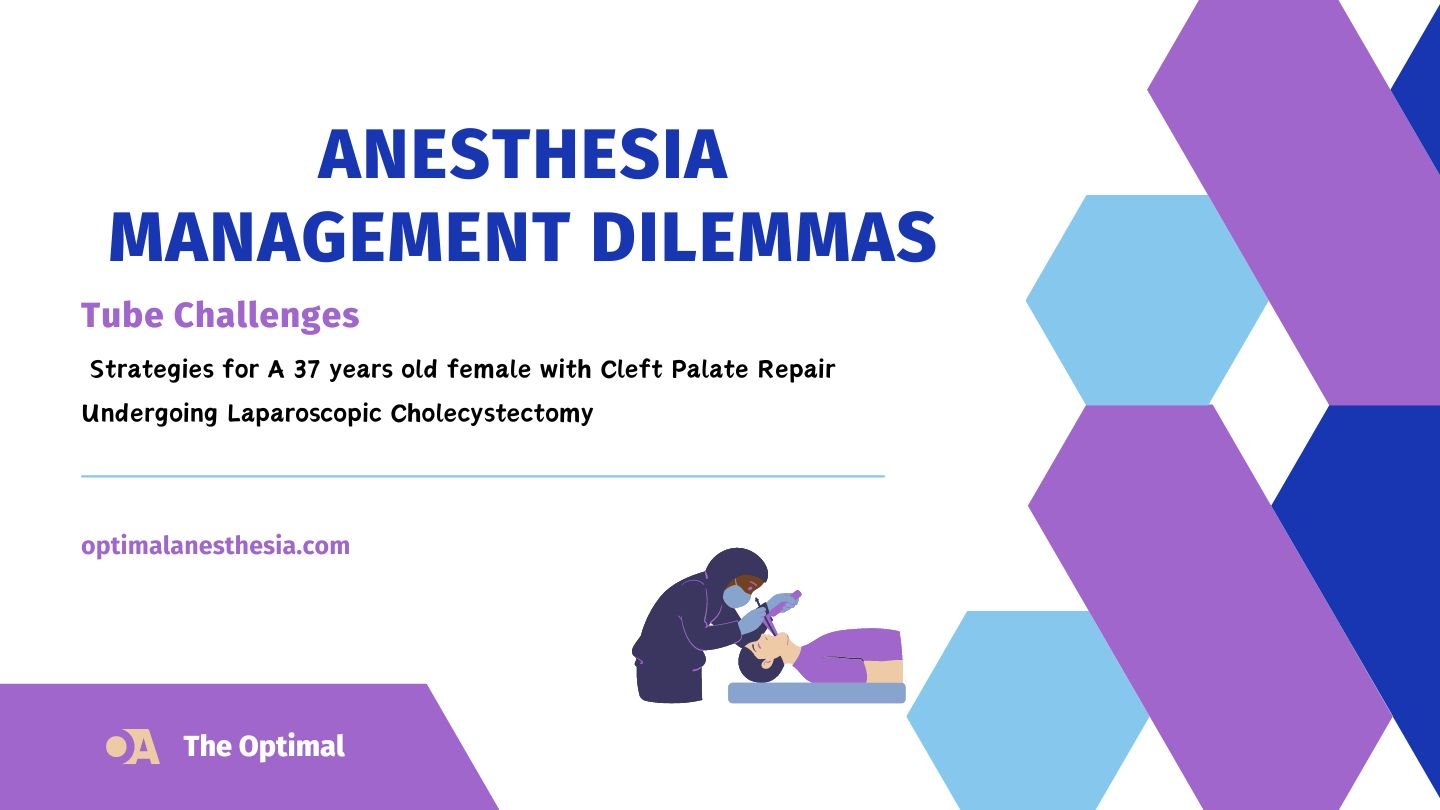Patient Information:
- Age: 37 years old
- Gender: Female
- Medical History: Cleft palate surgery at 2.5 years old
Procedure:
- Laparoscopic cholecystectomy
Case Summary:
The patient, a 37-year-old female with a history of cleft palate surgery at 2.5 years old, presented for laparoscopic cholecystectomy. The surgical team anticipated potential difficulties in intubation and laryngoscopy due to her medical history and anatomical considerations, including scarring from previous surgeries.
Challenges Faced:
- Anatomical Variations: The patient’s history of cleft palate repair may have resulted in altered airway anatomy, including a high-arched palate, which can make visualizing the vocal cords challenging.
- Limited Mouth Opening: Posterior crowding of teeth was noted, which could restrict mouth opening and hinder the insertion and maneuvering of the laryngoscope.
- Scar Tissue: Scarring from previous surgeries, such as the cleft palate repair, could alter tissue elasticity and make visualizing the vocal cords more difficult. Scar tissue can also increase the risk of trauma during laryngoscopy.
- Risks of Nasal Tube Insertion: Avoiding nasal tube insertion is also crucial to prevent damaging the repaired palate or causing a fistula due to the presence of scar tissue and altered anatomy. Using the oral route for Ryle’s tube insertion is generally safer.
Scarring from previous surgeries, such as cleft palate repair, can pose significant challenges during laryngoscopy, particularly in terms of visualizing the vocal cords. The presence of scar tissue alters the normal anatomy and elasticity of the tissues in the oral cavity and pharynx, leading to several potential difficulties:
- Reduced tissue flexibility: Scar tissue is often less pliable than normal tissue, which can make it challenging to manipulate the laryngoscope blade and achieve the optimal positioning for visualizing the vocal cords. The lack of flexibility can also limit the range of motion of the laryngoscope, making it harder to navigate around anatomical structures.
- Distorted anatomy: Scarring can cause distortion of the normal anatomy of the oral cavity and pharynx. This can make it difficult to identify landmarks that are typically used as reference points during laryngoscopy, further complicating the visualization of the vocal cords.
- Increased risk of trauma: The presence of scar tissue increases the risk of trauma during laryngoscopy. The rigid nature of scar tissue makes it more prone to injury, especially if excessive force is applied during the procedure. This can lead to complications such as bleeding, swelling, and further scarring, which can exacerbate the difficulty in visualizing the vocal cords.
- Impaired tissue mobility: Scar tissue can restrict the mobility of surrounding tissues, limiting the ability to achieve the optimal laryngoscope positioning. This can result in a suboptimal view of the vocal cords and increase the risk of airway complications during intubation.
- Difficulty in tube placement: The presence of scar tissue can make it challenging to pass the endotracheal tube through the vocal cords, especially if the scar tissue is located near the opening of the larynx. This can prolong the intubation process and increase the risk of complications.
Management Strategy:
- Utilize videolaryngoscopy for improved visualization.
- Use a bougie for intubation to navigate potential anatomical challenges.
Outcome:
The use of videolaryngoscopy and a bougie proved successful in managing the patient’s airway during the procedure. Despite the anticipated difficulties, the team was able to safely intubate the patient and proceed with the laparoscopic cholecystectomy without complications related to airway management.
Conclusion:
Managing patients with a history of cleft palate repair requires a thorough understanding of the potential challenges and careful planning. By anticipating difficulties and utilizing appropriate techniques and equipment, anesthesia providers can ensure safe and effective airway management in these cases.


